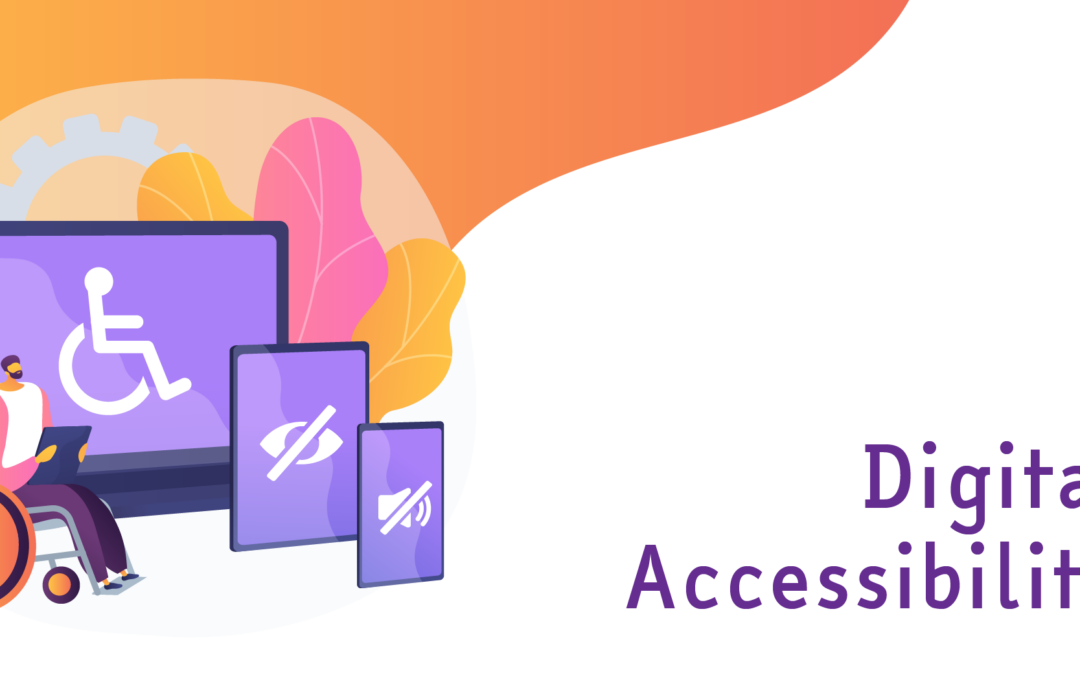In today’s digital age, when we increasingly communicate and get informed virtually and through digital means, the question arises – are the web and the digital devices we use accessible to all? While not entirely, great progress is being made in this direction.
The European Accessibility Act (EAA) and Europe’s Digital Decade policy have focussed on creating an inclusive digital environment that caters to the needs of various abilities. Specific improvements include universally accessible e-commerce platforms and transport ticketing services, making everyday tasks more navigable for individuals with disabilities[1]. The Digital Decade’s objectives aim to further enhance this accessibility by driving the digital transformation of businesses e.g., by ensuring online access to key public services, such as medical records and digital ID for citizens, thus simplifying access to essential services and information for people with disabilities[2]. While these efforts are key to removing digital barriers, making a substantial difference in the lives of people with disabilities by offering them greater autonomy and participation in the digital world, there is still a lot to be done by each one of us.
Before we go any deeper into what we, as organisations and individuals, can do, let us untangle the terms web and digital accessibility. Web accessibility refers to the practice of making websites [3] usable by people of all abilities meaning that web content can be navigated and understood by users of various abilities. Digital accessibility is a broader term which, while encompassing web content, also addresses digital documents, software, mobile applications, and electronic devices. In a nutshell – digital accessibility is related to the conceptualisation, design and structuring of technology products and environments, to ensure people with various abilities can access and fully utilise a function, service, product, or system, without any obstacles.
Are you interested to improve your web and digital accessibility to both support people facing difficulties accessing web and digital content and raise your web visibility, increase engagement and improve the impact of your digital presence? If the answer is yes, then the Digital Accessibility Guide, developed under the Map4accessibility project, is here for you to provide some answers of your search.Itaims at enabling you to make your digital and web content accessible, focussing on but not limited to, educational materials. Among the vast array of information and guidelines on web accessibility the Digital Accessibility Guide offers a structured and accessible approach to navigating the essentials of web accessibility, including initial steps, engaging facts, and creative strategies for incorporating accessible practices into your work. It features one page fact sheets to assist you in developing content across various formats, such as iconography, documents, presentations, online meetings, websites, video and audio content, online courses, learning management systems, social media, and open-source tools.
Why is the Digital Accessibility Guide both inclusive and focusing on accessibility? It is a product of the joint efforts of accessibility experts and collaborators who have reviewed it for broader inclusivity considering factors such as disabilities, gender, age, and other aspects of equity. Do you want to join the community which makes web and digital content, interactions, and information, accessible to all? You can do so by following the Map4Accessibility project which aims to develop a Pan-European accessibility mapping app to provide information on the accessibility of public spaces to all. The project is engaging higher education students in the form of service-learning – students learn through active community engagement and work on a community-identified concern (cf. the Map4accessibility previous article to see more on our service-learning approach). The project is further dedicated to gathering and sharing best practices and expertise on digital and physical accessibility for universities and cities. To learn more: https://map4accessibility.eu/.
[1] https://www.crownpeak.com/resources/blogs/the-european-accessibility-act-what-it-means-for-your-business/
[2] https://commission.europa.eu/strategy-and-policy/priorities-2019-2024/europe-fit-digital-age/europes-digital-decade-digital-targets-2030_en
[3] https://www.w3.org/WAI/fundamentals/accessibility-intro/
